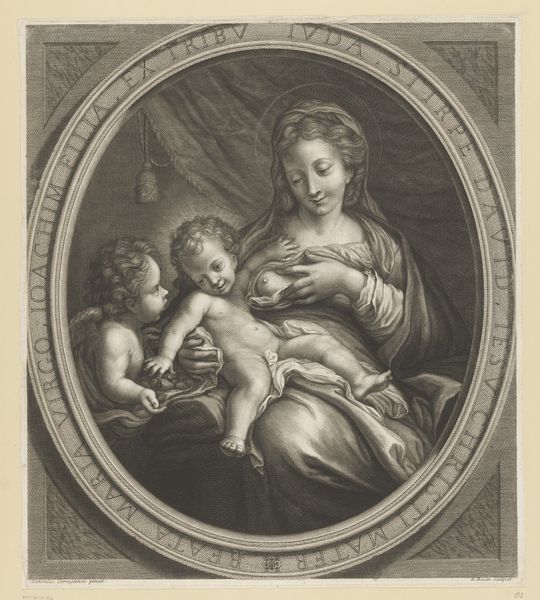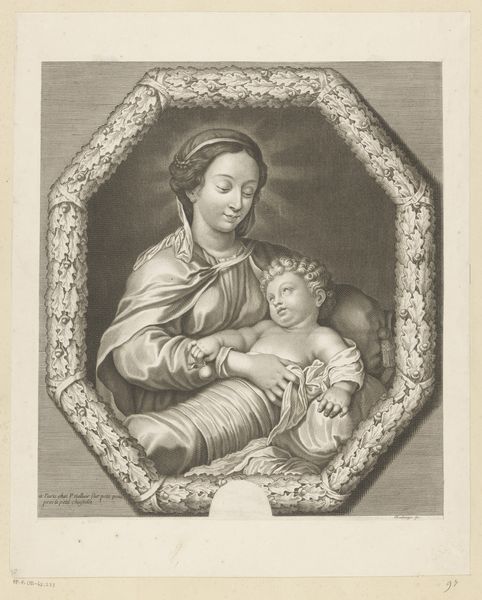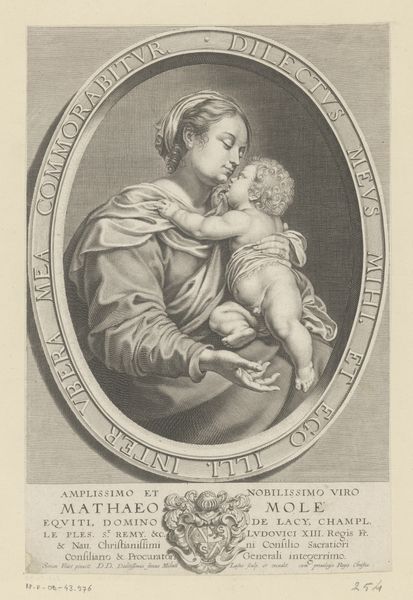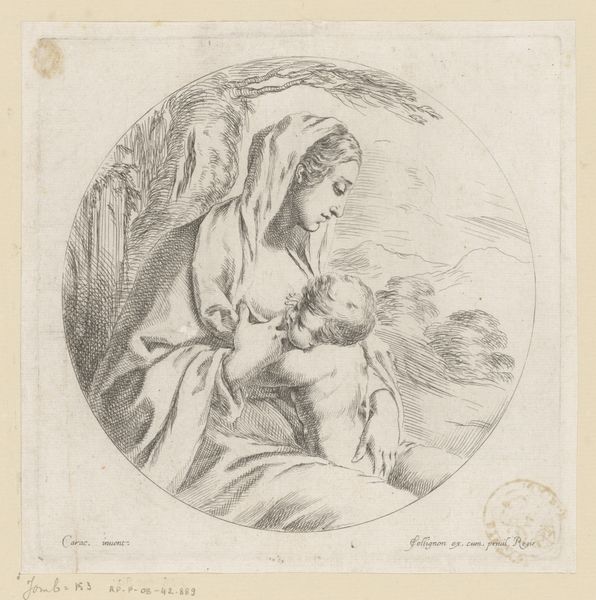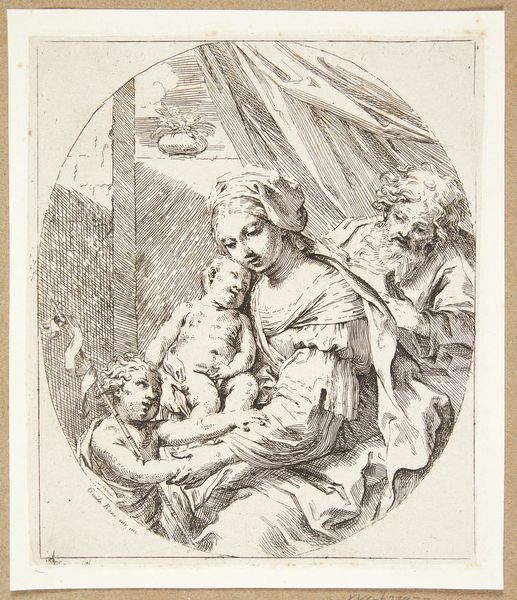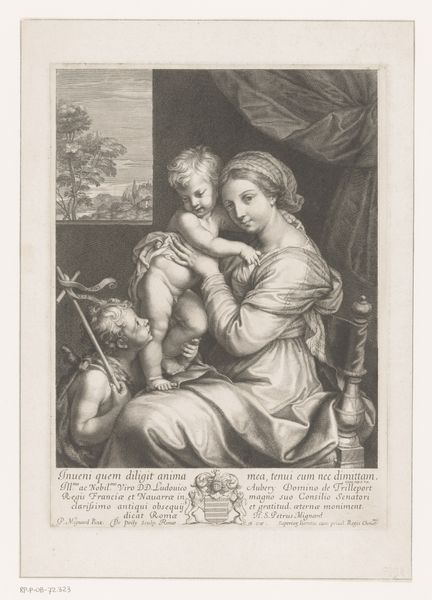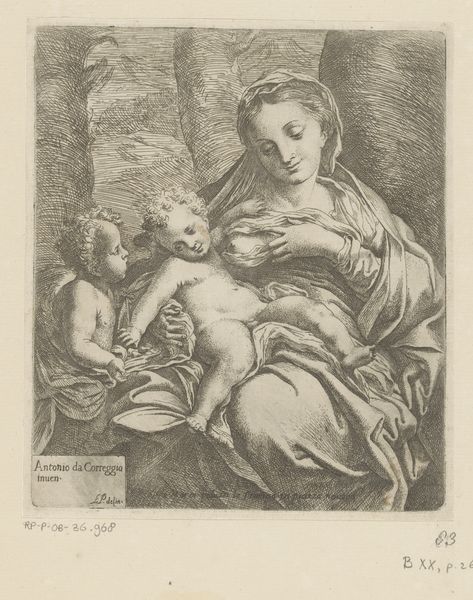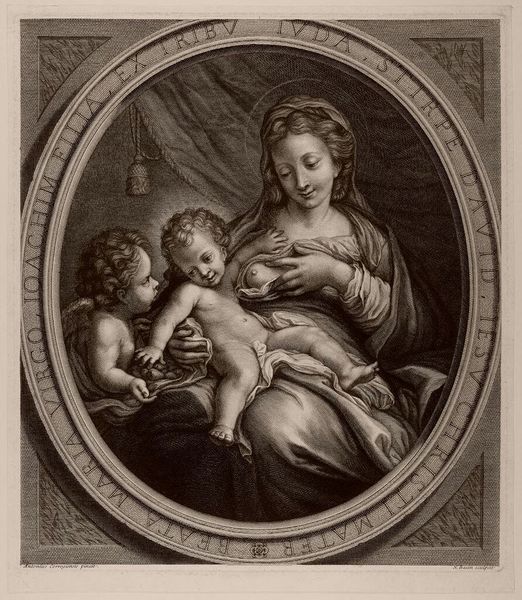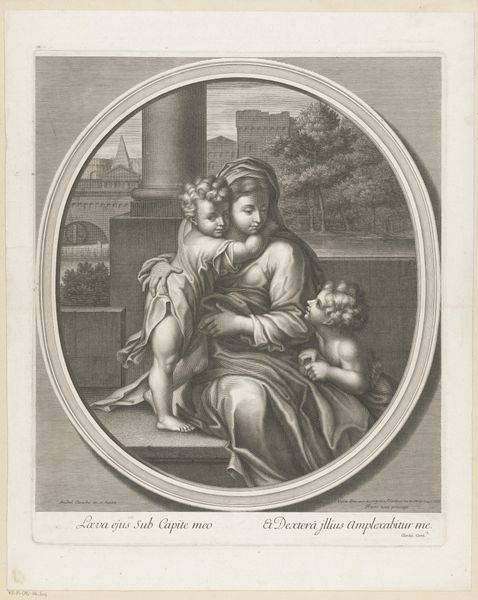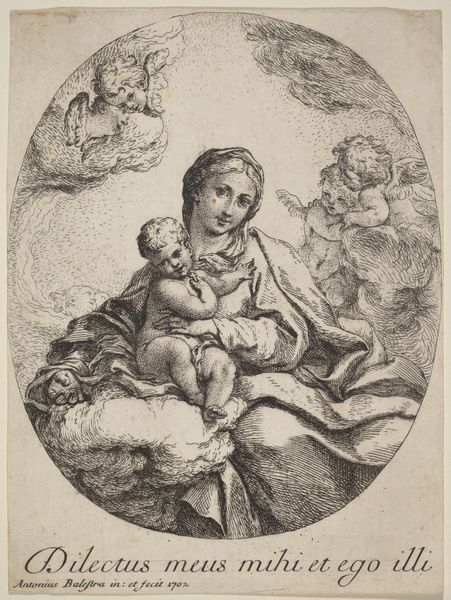
print, engraving
#
portrait
#
baroque
# print
#
old engraving style
#
caricature
#
figuration
#
line
#
portrait drawing
#
history-painting
#
engraving
Dimensions: height 235 mm, width 198 mm
Copyright: Rijks Museum: Open Domain
Curator: Let's consider this engraving from 1660, "Maria met Kind en de jonge Johannes de Doper" attributed to Johann Jakob (I) Thurneysen. The baroque styling really places this within a rich cultural and historical context. Editor: My initial impression is that there's an incredible softness to it, even though it’s a print. It feels almost like a tender drawing, a very intimate scene, really. What about the materiality of this work grabs you? Curator: Well, engravings like these served crucial roles. Beyond simple devotional images, they were commodities that could disseminate specific iconographies—in this instance, likely reinforcing Catholic doctrine during the Counter-Reformation period. These images served a very public purpose. Editor: Exactly, and I'm struck by the labour involved in its production. The artisan who created the plate must have worked meticulously with their tools to carve the image into the metal. Consider the social dynamics – was it a guilded trade, the patronage systems involved? Each line speaks to that process. Curator: Absolutely. The level of detail in the figures, and the symbolic gestures - John the Baptist's youthful veneration for Jesus, is definitely deliberate. Remember that printed images provided visual instruction, particularly within religious teachings of the time, playing a significant role in how faith was taught. Editor: Yes, and the print medium meant wider circulation. Think about who actually owned and interacted with these engravings, how did this object reinforce devotion, community? This act of mechanical reproduction democratizes art somewhat, taking religious imagery out of the exclusive sphere of paintings commissioned for wealthy patrons. Curator: Thinking about this work within the broader history of religious imagery and the public function art holds gives new meaning to its message. It underscores how social and religious frameworks heavily influence its meaning and usage. Editor: It’s amazing how an object rooted in repetitive production and labor generates such emotional significance, inviting a really unique lens to perceive artistic intention, audience interaction, and ultimately, meaning-making.
Comments
No comments
Be the first to comment and join the conversation on the ultimate creative platform.
